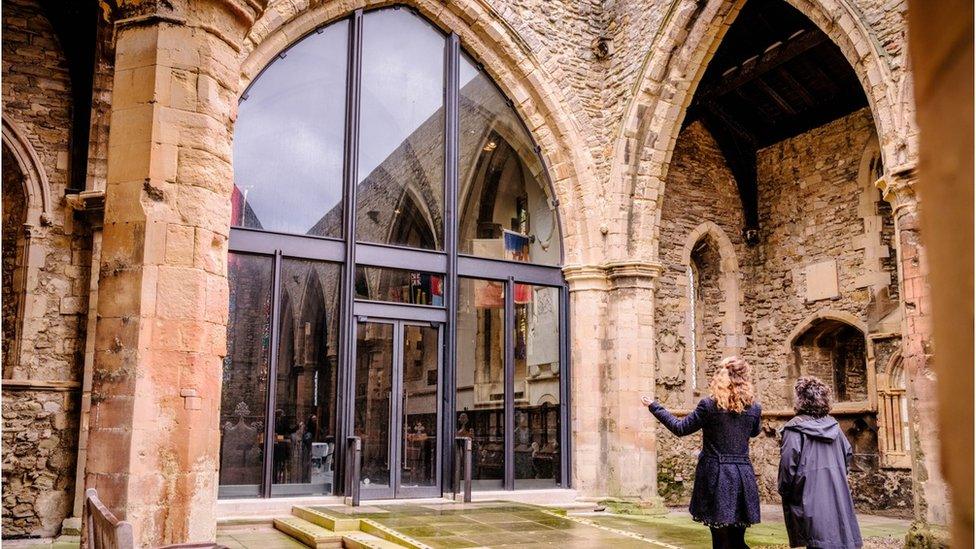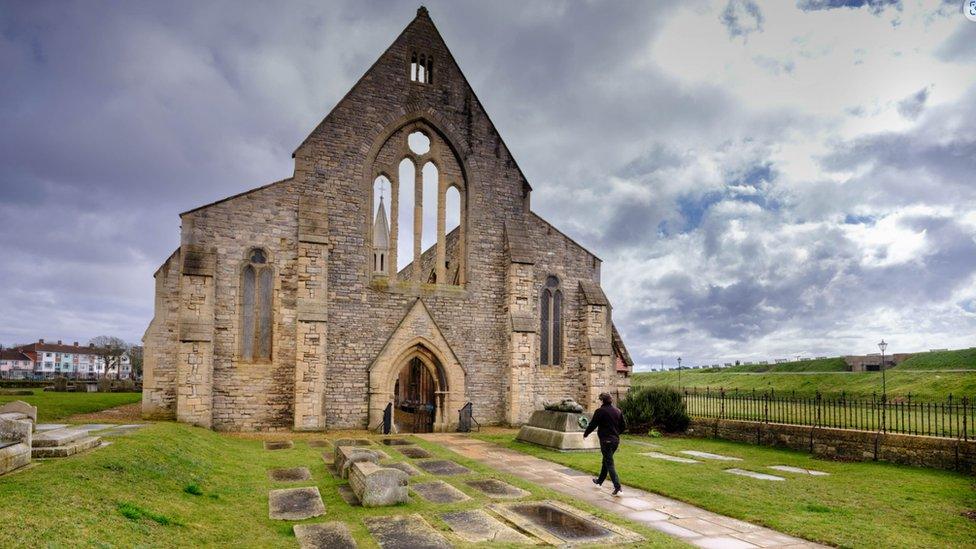Garrison church war damage reimagined in restoration
- Published

English Heritage said project had been a "huge technical engineering effort"
An 800-year-old church that was damaged during World War Two has undergone a major restoration project.
The nave of Royal Garrison Church in Portsmouth was bombed in 1941 and its ruins have been separated from the chancel by a wall since the 1960s.
As part of the restoration, English Heritage has installed a glass partition to reunite the spaces and create better accessibility.
It said the project had been a "huge technical engineering effort".
Built in the early 13th Century by the Bishop of Winchester, the church was originally a hospital.
After the Reformation, it fell into neglect and was used as an armoury before being converted into the Governor of Portsmouth's residence in the 1580s, which hosted the marriage of Charles II to Catherine of Braganza in 1662.

The chancel and bomb-damaged nave are now linked by a glass screen
In 1814, it also hosted a reception of European royalty, including the Prince Regent, Emperor of Russia, King of Prussia and Duke of Wellington, to celebrate the defeat of Napoleon.
In 1826, the majority of the Governor's House was demolished, leaving only the surviving church building.
Samantha Stones, a senior properties curator for English Heritage, said: "Replacing the screen has been a huge technical engineering effort.
"We needed something that was robust enough in the exposed environment, but also had minimal impact on the medieval masonry.
"We're so excited to unveil our new design, which has dramatically improved the visitor experience and allows us to better tell the stories behind this exceptional building."
Pews damaged in the bombing raid have also been restored.
The church's decorative organ pipes and military banners have also undergone conservation work.
It is due to reopen on 1 April.

Follow BBC South on Facebook, external, Twitter, external, or Instagram, external. Send your story ideas to south.newsonline@bbc.co.uk, external.